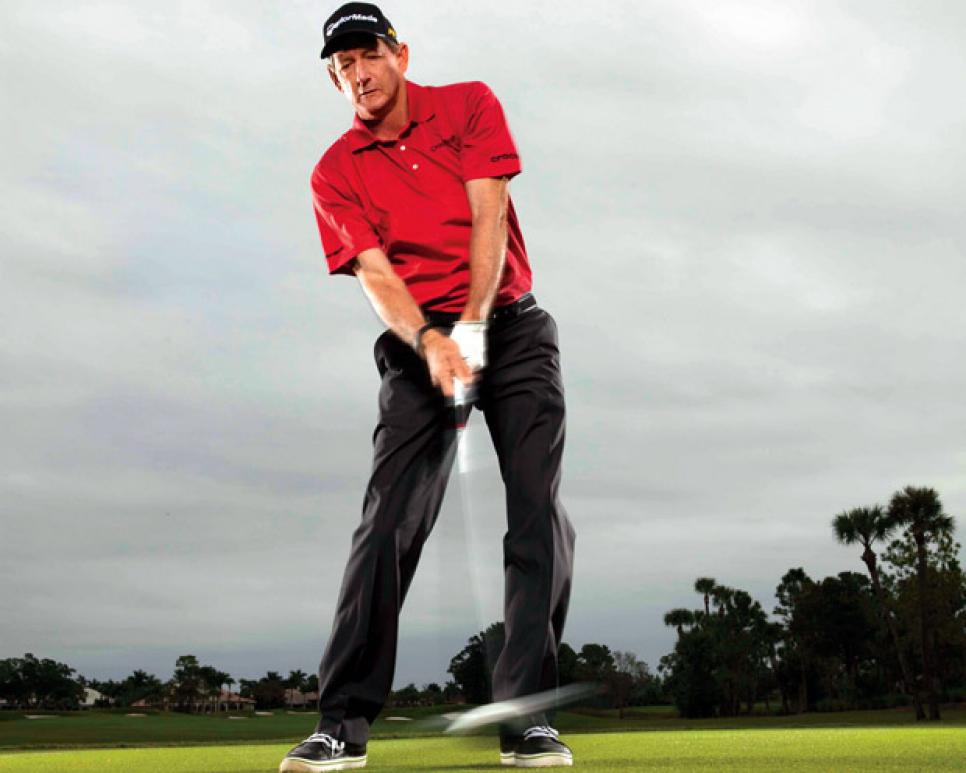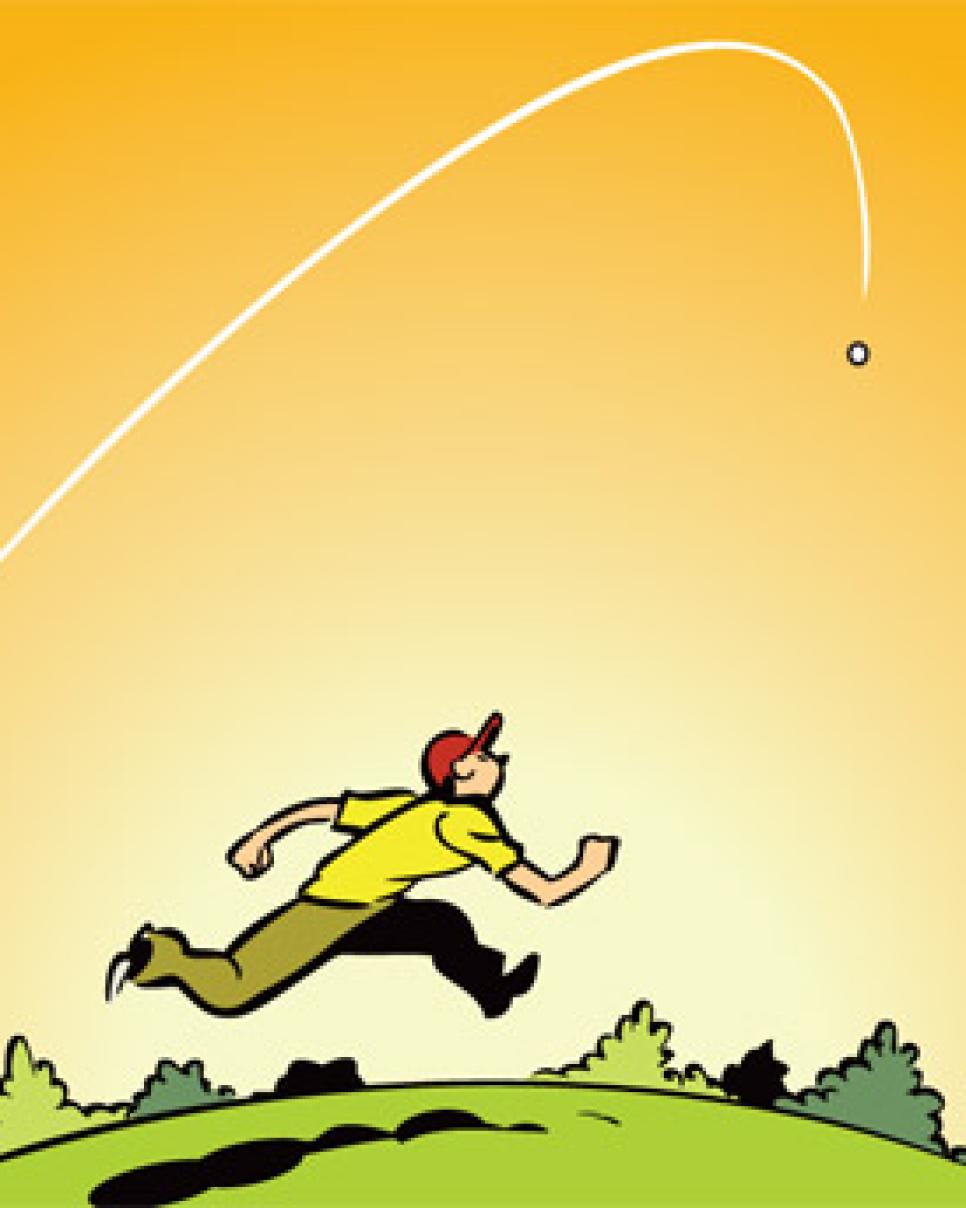Driving
Bigger Drives

When a second baseman chases a ball deep into the hole, he has to turn, jump and throw across his body. It's impressive to watch, but he can't get nearly as much on the throw as he'd be able to get with his feet on the ground. The golf swing works the same way.
The longer you keep your feet planted on the downswing, the more leverage and power you can create. The most common mistake players make is on the first move down. They immediately get up on the toes of the right foot, and the right knee and hip move toward the ball. That leads to a steep downswing and a slice or pull-hook.
Next time, try a different first move. Feel your weight shift laterally, from the inside of your back heel to the ball of your front foot. Your feet will stay set, your hips will follow on the correct angle, and you'll have more hitting power at impact.

HOW I SEE IT
Chasing the long ball
When you see a tour player's driving-accuracy percentage go down, the reflex is to wonder why he doesn't just hit 3-wood instead. I certainly heard that about Tiger Woods over the years. But it's not that simple. Players stick with the driver because guys like Rory McIlroy are hitting it on almost every hole. You can't give up 400 or 500 yards a round to the best players and expect to compete week in and week out. That's too much to spot. And the fairways-hit stat doesn't matter as much as you might think. A tour player's round hinges on a few key drives: For the long hitters, it's whether they hit the fairway on any reachable par 5s; for shorter hitters, the critical holes are the long par 4s. Decent misses on the other holes are usually fine.
HANEY, a Golf Digest Teaching Professional, runs the Hank Haney International Junior Golf Academy, Hilton Head.